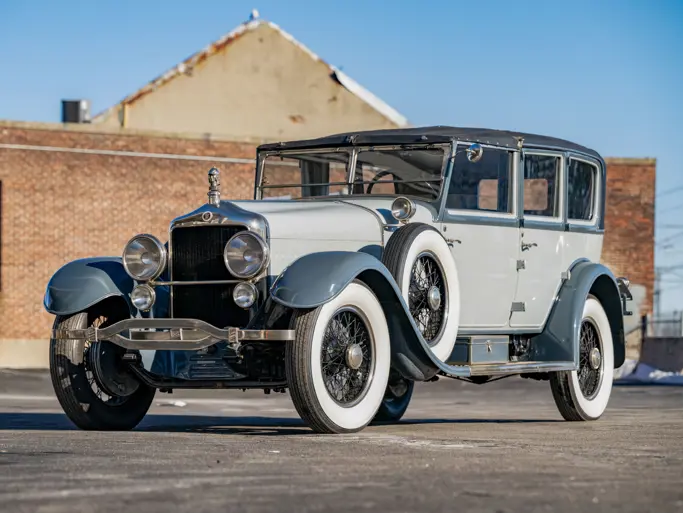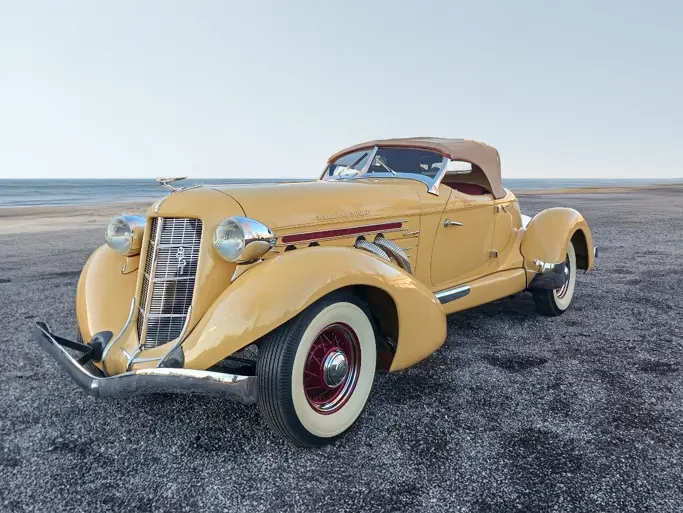90 bhp, 319 cu. in. L-head inline eight-cylinder engine, three-speed manual transmission, solid front and live rear axles with semi-elliptic leaf springs, and four-wheel mechanical brakes. Wheelbase: 126.5"
- Well-maintained older restoration
- Recent mechanical service
- Very well equipped with features including wood-spoke artillery wheels and Packard trunk
Packard dominated the Classic Era, and its advertising reflected this success. Elegant ads featured the gates of mansions through which “Packards have passed” for 20 years or more. Packard’s famous advice to “Ask the man who owns one” remains another classic example of good advertising that set the standard for prestige.
For the Sixth Series of 1929, Packard’s Model 626 and 633 were the marque’s most important models. Riding on a 126.5- and 133.5-inch wheelbase respectively, the Standard Eight models were powered by a 319 cubic inch inline eight-cylinder engine producing 90 bhp. The Model 626, in particular, was available in 5-Passenger Sedan, 2/4-Passenger Coupe and Convertible Coupe body styles. Weighing 4,020 pounds and priced from $2,425, there was nothing “standard” about the Model 626 Convertible Coupe though, with its roll-up side windows, crank-out windshield and snug soft-top, complete with landau irons. With their shorter wheelbase, close-coupled open bodies, rumble seats and golf-bag compartments, these are very sporting Packards.
The current owner acquired this very fine example in 2011 from the prior owner, who commissioned its complete, professional body-off restoration in 1999. Wood-spoke artillery wheels and numerous period accessories including dual Trippe lights, a radiator stone shield, dual covered side-mounted spares with side-view mirrors, and wide whitewall tires accent the tan body and brown fenders. The rear trunk rack is fitted with a rare original Packard luggage trunk, which retains a “Packard Motor Car Co.” plate inside.
The car’s mechanical components were recently gone through and the vital fluids changed, the carburetor rebuilt and the fuel tank cleaned and boiled out. We understand the car has recently been road-tested and performed without issue on a 100-mile round trip.

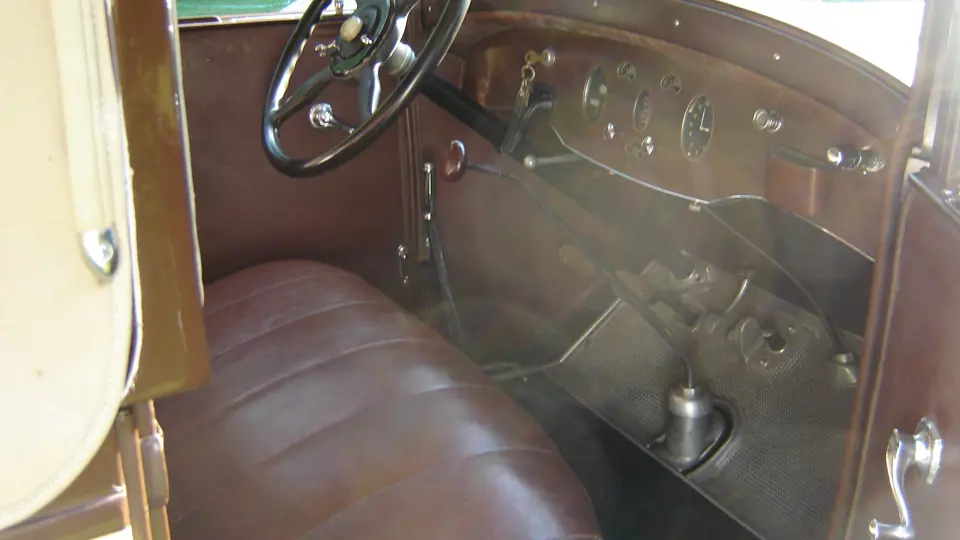


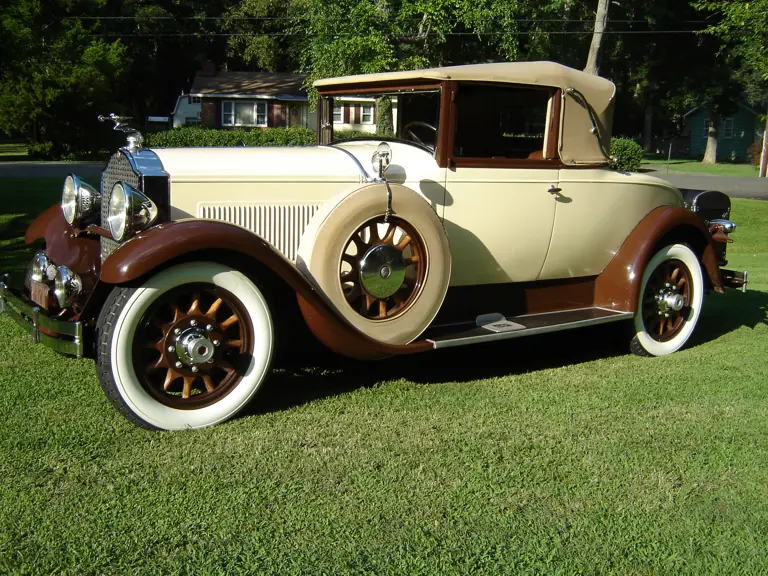
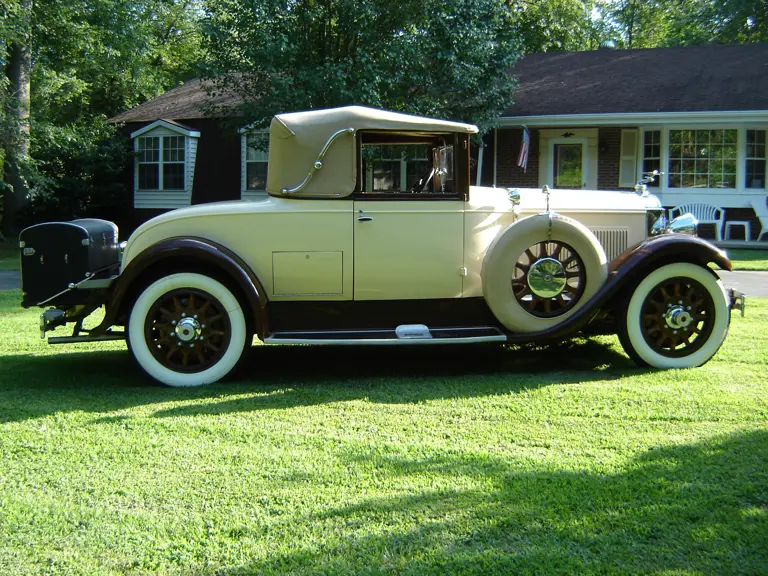

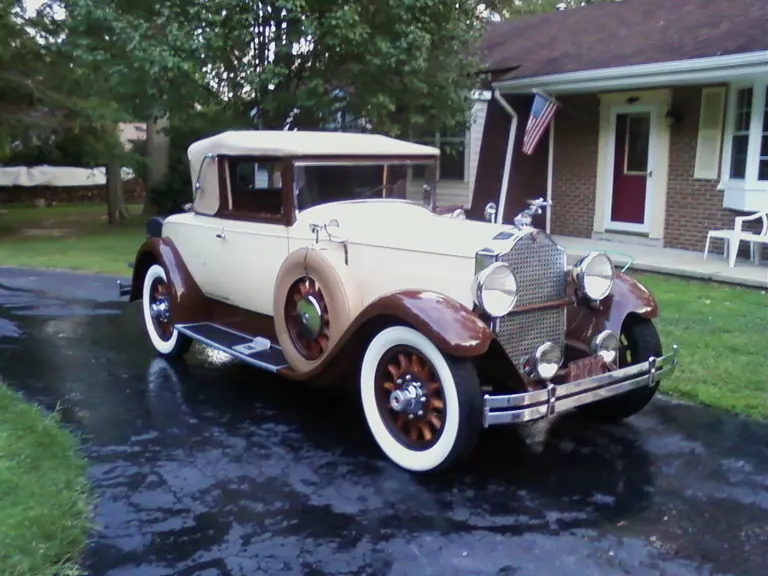
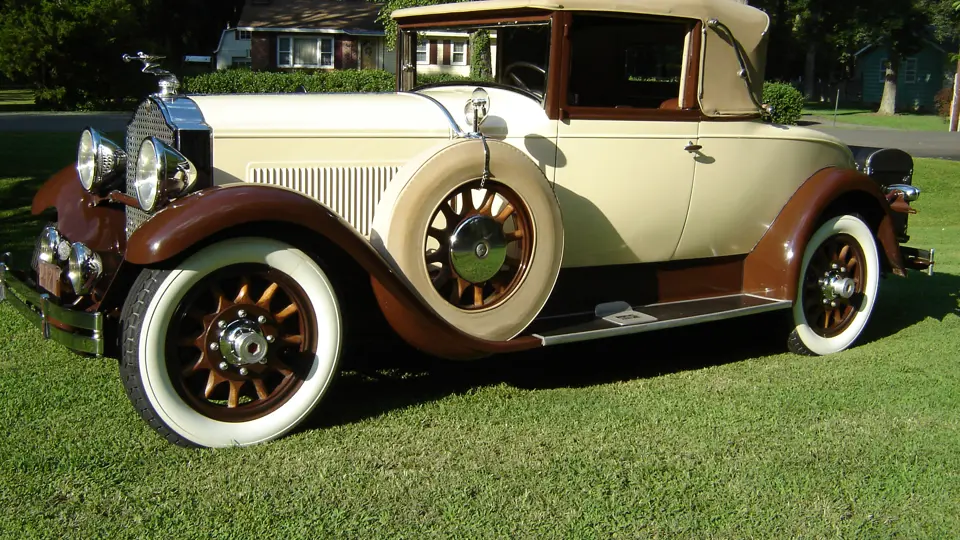
 | Hershey, Pennsylvania
| Hershey, Pennsylvania
